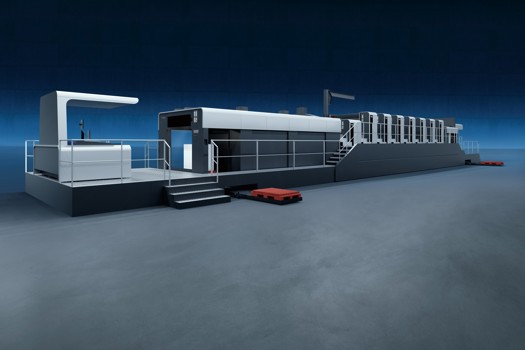It's a truism that the customer is king. So it stands to reason that treating customers like royalty could be the key to winning and keeping business.
"Our relationship with customers has never been more important," says Jon Tolley, a director at Nottingham print firm Prime.
It is a sentiment echoed across the industry. "The recession has focused printers' minds on customer retention and increasing business from existing clients," explains Paul Deane, joint managing director of MIS supplier Shuttleworth.
In order to keep clients sweet, companies are looking for tools that can help with the process. One tool that's proving popular is customer relationship management (CRM). This three-letter acronym is often heard in the same breath as another, MIS, and often it is MIS vendors who offer printers CRM. However it's not just a software package - it's a process and a way of managing your business.
And, according to some, it would appear to be a trick that many printers have been missing out on. "Not enough printers use CRM," says MIS supplier DDS Accura's international sales director Alan Potter. "About 15-20% of our customers have our CRM. Of the others,most have nothing and a small number run a third-party product such as Act or Goldmine."
It's a simple enough idea, but the key to making it work is in understanding its principles. "CRM kicks in right at the start of any marketing activity and it never really ends," says Jude Whitford, commercial director at Plymouth-based direct mail specialist Pepper Communications.
Evolving representation
One of the main benefits is in bringing a more structured and controlled sales process. "Sales has been a hidden process," says Jaap Schram De Jong, director MIS/ERP supplier Crimson Wing. "Salesmen hate systems and trade on the value of their contacts. But now is a great time to implement a system as people are happy just to have a job."
Printers agree that there is a shift in the business culture afoot. "It's not about any individual's relationship with the customer. If a rep thinks like that then their mindset has got to change," says Tolley.
Deane says that using CRM is a differentiator for thriving businesses. "There's no doubt that the more forward-thinking people put CRM at the heart of what they do and, as a result, they are more likely to survive the recession," he explains. "Even without the software you can have a powerful CRM system. It's about a creating a methodology - the software supports that."
One company that practises CRM, but hasn't splashed out on a specific software package is Croydon-based Real Digital.
"We use a manual system and a central contacts database that we break down by sectors and the warmth of the prospect," says director Andy Ruddle. "Our senior account directors know their sectors and clients, and the people tend to move within those verticals. It wouldn't be worth having a software system in our situation. We wrote something for ourselves in Microsoft Excel, which was much cheaper than a branded solution."
However, Ruddle acknowledges that his business, with its focus on data-driven direct marketing, is in a different position from the average printing company. "We understand what we want to do and already have the tools to implement it," he says.
"CRM means a different thing for us. For our clients - the big brands - it's a tool for profiling their customers by location, interest, age, class and interest, which is essential for successful one-to-one communication."
Essential components
Tolley believes that the right software, culture and structure of the business are all essential components to CRM. "You could do it without the software, but without the structure of the software making the changes needed, it is very difficult," he says.
However, he adds: "Using CRM is a different mentality. Unless you have the actual practices in place, putting the software in place is a big task. You need to manage the change from the top down, it's as important for me as the rest of the company's staff."
One problem when it comes to imposing structure and discipline is that there are no hard and fast rules in CRM.
"Unlike finance, stock control or payroll it isn't legislated," says Schram De Jong. "There's no legal or fiscal governance, so its use is only as good as your systems and your discipline. A lot of it is about driving attitude and behavioural change by better management."
Data retention
Pepper is an example of a company that has adopted CRM, running Goldmine software since 2000. Its business is structured so that it is supported by the system: account directors bring in business, which then passes to account managers and account teams. To support this, customer information is centralised and shared rather being isolated with just the account director.
"It's not just one person having a relationship with the customer," says Whitford. "Before we had the Goldmine CRM, there was no central repository - an account director had their rolodex and if they went, it went with them, and potentially all that business."
He adds: "Recently, we lost a salesperson, but all the data was in the system so it was simple for another member of staff to take over that client relationship."
Whitford also believes that CRM increases the value of a business. "We've looked at acquisitions where the vendor has talked about customer data worth £50,000," he says. "In the end, it turns out to be a list of invoiced firms from their accounts package, which is almost useless. What we've got has got far more value - personal data, spend levels and a relationship with the firm."
Examples of personal data include interests and favourite sports, making it easier to understand who would appreciate an invite to a golf day or a rugby match.
"There are customers who are strictly business," says Whitford. "In that case, it's worth making a note so that you don't annoy them by inviting them to events that they aren't interested in."
According to Whitford, using a CRM package can help with keeping on top of ‘to-do' lists by making use of the reminders built into the system. "It's very basic but it pays off," he says. "If you do what you said, even if it's just call when you said you would, it adds trust to the relationship."
Reminders can also be set about dialogue with lapsed customers, which can help bring them back on board.
Getting the full package
However, to get CRM's full benefits, it needs to be applied throughout the business.
"Some people just give it to the sales guys, which is illogical," says DDS Accura's Potter. "It gets away from having Post-It notes everywhere and makes it possible to respond much more quickly."
Quality control is also integral. Schram De Jong uses the example of a Crimson Wing customer who used the software to analyse returned jobs. "Our customer got rid of the top two reasons and reduced returns by 50%, which led to faster payment and more repeat business."
What about the economics of installing CRM? If your MIS already has CRM functions, then the only investment is time to implement it, and even adding a system may cost about £200 per seat. Of course, it can be much more upfront, but the payback can be rapid. "Our investment has been around £25,000, including upgrading peripheral software such as the MIS," says Tolley. "I would be disappointed if we didn't get a return of quadruple that this year."
For Potter, it's an insurance policy: "If you retain one customer, then CRM pays for itself."
CRM: PICKING A SYSTEM
If you do go down the route of implementing a CRM system and decide that you need a software package to support the move, you need to decide whether you want a standalone CRM or one that is part of your MIS.
Both approaches have their advocates and also their pitfalls.
Pepper runs a Goldmine CRM, which is linked to its Tharstern MIS.
It would be nice if CRM and MIS were more tightly integrated. However, the products are disparate in what they do well, says commercial director Jude Whitford. The biggest pain is having to re-key data into each system.
For Prime the CRM is now at the centre of its business.
Integrating all our systems is key, and CRM is at the heart of that, says director Jon Tolley. We’re putting in a Sage CRM. MIS used to be that core communication tool. Now it will be the CRM and will automate the process so that nothing will be overlooked.
Some MIS vendors argue that it’s cheaper and simpler to use CRM tools built into their systems. Our philosophy is if we have something ourselves we won’t integrate with a third-party because it’s very difficult to integrate bi-directionally. Our CRM is as fully featured as many off the shelf packages, says Accura DDS international sales director Alan Potter.
The benefit is it’s a seamless system from prospect to customer with one-touch entry. You don’t have to create a customer in the MIS, the CRM and the accounts package, adds Crimson Wing director Jaap Schram De Jong. He also argues that a standalone system will be too expensive and complicated for all but the biggest printing operations.
Most CRM systems are overkill and most firms currently have nothing. Trying to install such as system is like shooting for the moon. For firms from £2m-£5m, budget is an issue and a standalone CRM adds additional costs for service contracts and licence agreements.










